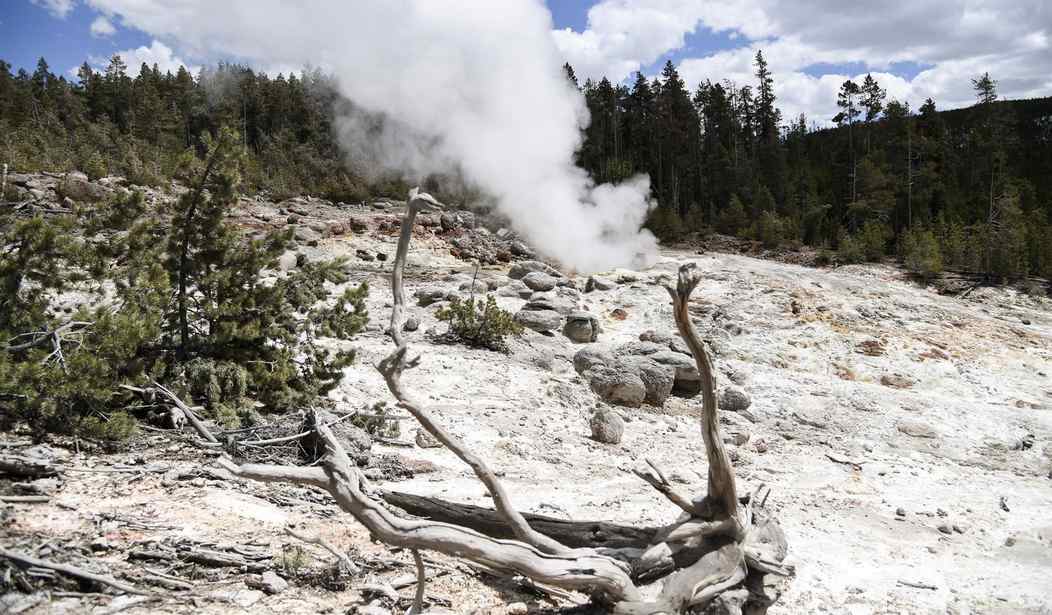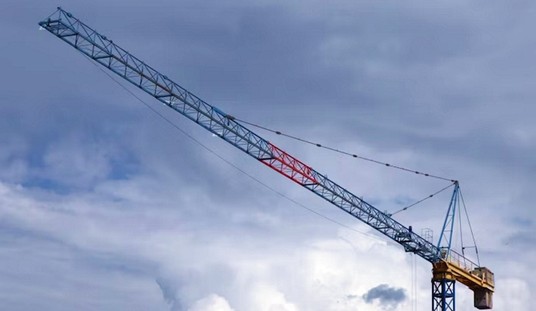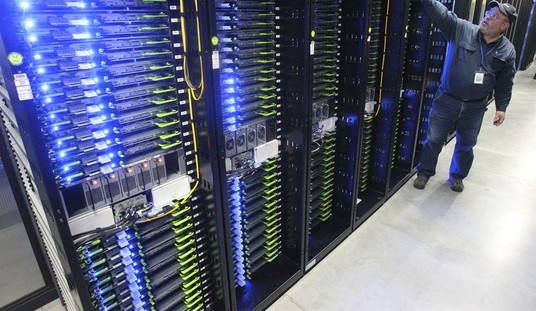When I lived in the Denver area, I had a habitual thing I did when people visited us from other parts of the country. I would load them in the truck and drive them out to the high plains above the city to the east, usually down Smoky Hill Road, and stop where you could see the skyscrapers of downtown Denver. Those were some pretty big buildings — not New York or Chicago big, maybe, but substantial — and they were dwarfed by the massive Front Range, towering up, dominating the skyline west of the city. That was thought-provoking. And now, living here in the Great Land, it's almost a daily occurrence that Alaska, which I have always described as vast, wild, and free, gives us occasion to feel pretty puny.
Earth is big. Really big. We are awfully small by comparison, and for another example, consider the Yellowstone caldera — and what might happen if it erupted.
Some have suggested that the odds of a Yellowstone super-eruption in any given year today are 700,000 to one. So what would happen if Yellowstone erupted now?
Two scenarios have been considered.
In the first, if the supervolcano erupted in one 'big bang,' some have suggested that the explosion could be equivalent to 875,000 megatons of TNT (million tons).
To put this in context, the largest nuclear bomb ever detonated, the Soviet Tsar Bomba, was 50 megatons — just a few thousandths of a percent of that power — and yet the Bomba was reported to have broken windows hundreds of miles away.
Thousands would die in pressure waves from a 'big bang' eruption of the caldera and it could cover much of the North American continent in up to a foot of ash.
That's the worst case, but the second-worst case is still pretty bad.
But even in that second scenario, this series of smaller eruptions would still leave an area within a 125-miles radius from Yellowstone devastated, Poland said.
'There's all kinds of examples of small amounts of ash causing buildings to collapse,' he noted. 'There is a really amazing photo of an airplane in the Philippines after the eruption of Mount Pinatubo in 1991.'
In other words, if Yellowstone goes up again — it has before — it's bye-bye to much of North America, suddenly making the hand-wringing about climate change seem pretty irrelevant.
Much smaller volcanos have had a nasty, lasting effect on the Earth's climate. In 1815, in what is now Indonesia, Mount Tambora erupted with a blast that killed more than 10,000 islanders, resulting in a crater that spanned 5.7 miles. That resulted in the famous 1816 "Year Without a Summer," as aerosols, dust, and ash from the volcano blocked sunlight for many months; 36 cubic miles of ash and 60 megatons of sulfur compounds resulted in a temperature drop that caused massive crop failures, skyrocketing prices, and famine.
The Yellowstone volcano would be orders of magnitude more serious. Most of North America could be covered in feet of ash. There would be no crops. The electrical grid and other utilities would be destroyed; millions, maybe billions of deaths worldwide.
There are other dangers.
See Related: Danger in the Pacific Northwest: What's Worrying Geologists Most?
Tongan Volcano Could Affect Weather for a Decade
The Cascadia subduction fault, should a major earthquake happen there, could drown much of the Pacific Northwest in a mega-tsunami — after a 9+ Richter-scale earthquake. The tsunami would affect most of the Pacific basin, including Japan, Taiwan, and even Hawaii. The Azores have a similar possibility, the Azores-Gibraltar Transform Fault, which could cause a tsunami that would destroy most of the Eastern United States, the Caribbean, and the coasts of Central and South America.
And do we have to mention what a major asteroid strike could do — or a nasty solar flare?
Now, there's little reason to worry about these possibilities. For one thing, worrying won't make any difference; the Earth has its cycles, and worrying over them won't change anything. The sun rises every day whether we think about it or not, and it's the same with the natural catastrophes I've described here. Also, these are events that happen in intervals measured in tens or hundreds of thousands of years; an eyeblink in geologic time, an eternity in ours. Any one of these things might not happen for 10,000 years — or they may happen tomorrow.
So when the climate scolds start lecturing us about our air conditioners or our SUVs, a little perspective is in order. We are, when measured against the lifespan and the scale of the planet we live on, pretty tiny. That's not to say we should be careless; but when measured against the time since the Industrial Revolution began, right now we are enjoying cleaner air and water than we have for nearly two centuries. So pipe down, Greta; if a DOOM does come to humanity, it won't be through my owning a pickup truck or using a wood stove. The kinds of effects Mankind can have on the earth are awfully puny compared to what nature can do.













